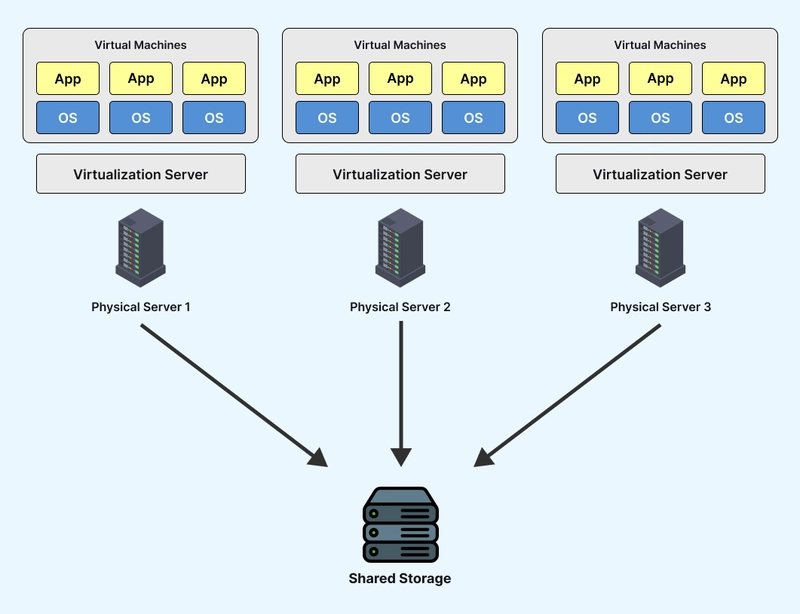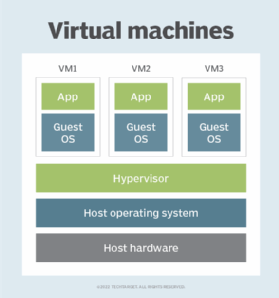What is virtual machine?
A virtual machine (VM) is a software-based computer that runs within another computer's operating system. It functions like a separate computer with its own CPU, memory, and storage.

physical server vs virtual machine
What is a physical server?
physical server is a real, tangible computer (like a desktop or a rack-mounted unit) that stores and manages data and applications, often used in a company's server room or data center.
What is virtual server?
virtual server is a software-created "server" that runs on top of a physical server, allowing multiple servers to share the same hardware resources, like a virtual room in a real building.
example:
let say there are two teams team A and team B. both teams working different application on same specification (like 50 GB RAM and 4 CPU) but team B need only 5GB RAM to run their application so 45 GB is waste. It is inefficient way so Virtual machine came in the picture.

what is Hypervisor?
hypervisor is also known as virtual machine monitor(VMM).
hypervisor is a software that you can use to run multiple virtual machines on a single physical machine. Every virtual machine has its own operating system and applications. The hypervisor allocates the underlying physical computing resources such as CPU and memory to individual virtual machines as required.
Key differences: type 1 vs. type 2 hypervisors
While type 1 and type 2 hypervisors share the common goal to run and coordinate virtual machines (VMs), they have some significant variations.
- Resource allocation Type 1 hypervisors directly access underlying machine resources. They can implement their own custom resource allocation strategies to service their VMs.
Type 2 hypervisors negotiate resource allocation with the operating system, which makes the process slower and less efficient.
- Ease of management Managing a type 1 hypervisor and its VM configuration requires system administrator-level knowledge, as it’s relatively complex.
In contrast, you can install and manage type 2 hypervisors as an application on an operating system. Even nontechnical users can operate them.
- Performance Type 1 hypervisors offer greater performance to their VMs. This is because they don’t need to negotiate resources with the operating system or travel through the operating system layer. The type 1 hypervisor offers dedicated underlying resources without any negotiation required.
Type 2 hypervisors must only use the resources that the operating system is willing to provide.
- Isolation Type 1 hypervisors offer a greater degree of isolation for each virtual environment. There’s no shared layer like there is with the operating system for a type 2 hypervisor. This makes virtual machines running on the type 1 hypervisor inherently more secure. However, updating and patching your virtual machine operating systems is a critical security activity.


Top comments (0)